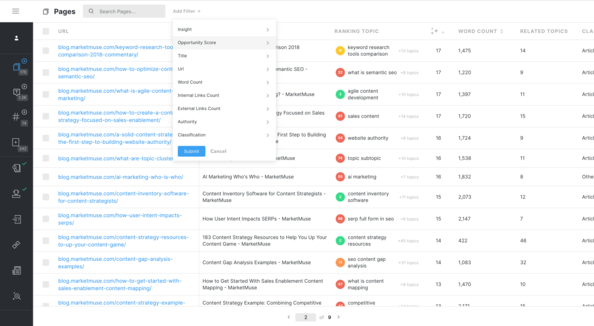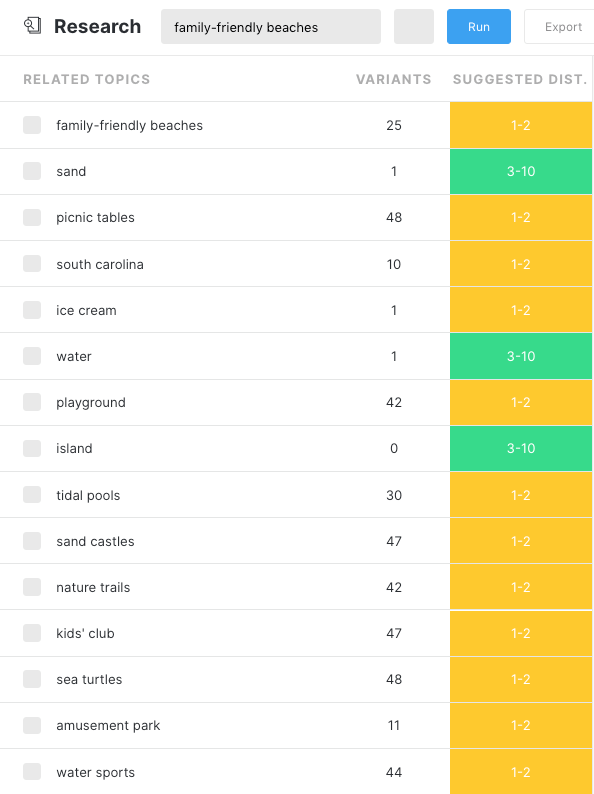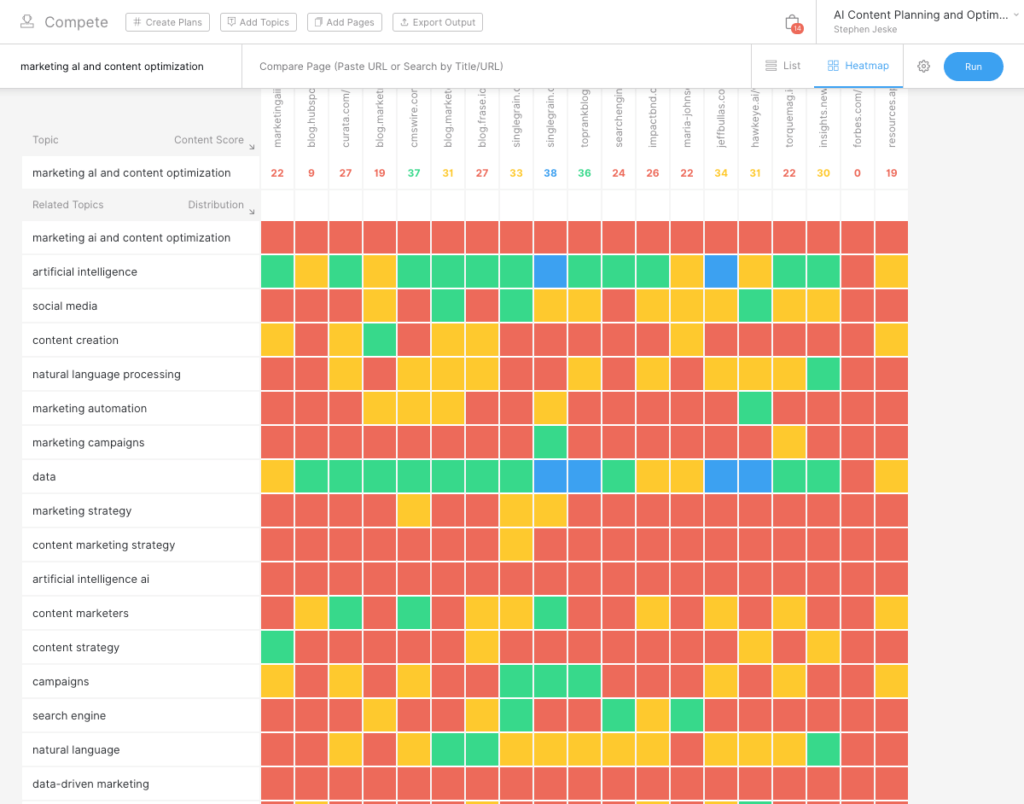Advanced Content Strategy and Concepts
In my last post, I discussed some of the basics of content strategy, including user intent, buyer personas, and content clusters.
In this post, I’ll talk about some more advanced content strategy concepts. We’ll go over why website content audits and content governance are essential, how to identify content gaps, and how to really dig into your topic research.
As a content strategist, it’s your responsibility to put these concepts into practice before you start creating your content.
Content Auditing
If you already have a repository of content, it’s important to know exactly what you have before you implement your new plan. You’ll have pieces that did really well and some that did not as well. And you’ll begin to identify places where new content is warranted.
Of course, you’re tracking those pieces that already exist to determine page views, shares, time on page, and other relevant analytics. But there’s a limit to how long most people track. After that, content tends to fall into a sort-of backlist of material.
You can’t keep track of everything at all times, and that’s where content audits come in.
If you have a substantial library of content, it’s essential to set aside time for regular audits. Whether you do those audits monthly, quarterly or yearly will depend on how frequently you create content.
To audit your content, gather every piece that you have. Take a look at topics, titles, keywords, and compare that to each piece’s performance analytics. From this data, you can pull critical insights such as
- How well you covered a topic;
- How well a piece, content cluster, or general topic performed; and
- How well each piece covered a topic.
You can do this with spreadsheets and careful, manual analysis, or you can use content analysis tools like MarketMuse. That enables you to conduct full content audits of each piece of content and your overall content library.

A content analysis tool can also compare your content to that of your competitor and how well you’re performing compared to them.
You can also determine where your content gaps are and how to fill those gaps.
Topic Research
One of the differences between a rookie and a seasoned content creator is the way they conduct their topic research.
Sure, you can do a cursory search for popular topics, come up with some keywords, and get writing. That method is especially tempting and even works if your content strategy depends on trending stories or current events.
But, if your plan depends on evergreen topics, or creating evergreen content based on popular or seasonal topics, you have the opportunity to really dig into your research.
Topic research often starts with popular keywords and topics that people are searching for and clicking on. But to build a target audience around your content, it’s essential to find your niche within those topics and your own unique voice.
You need to know who your audience is, as well. Knowing who your users are will ensure you’re creating content in which your users are interested.

If you are a retailer who sells clothing made with sustainable materials, your target audience is probably more environmentally minded and less into fast fashion. Your research, then, will focus on environmental subtopics within popular fashion topics.
If you were to take advantage of the buzz around New York Fashion Week, you wouldn’t write about all emerging trends. Instead, you would focus on trends having to do with sustainability.
You won’t just be creating topics your in which your audience is interested. You’ll also stand out among a sea of content focusing on New York Fashion Week.
It also works hand in hand with your content audit. First, research strong topics within your niche. Then compare those topics against your audit.
- What have you covered well?
- What are you missing?
- Where can you beef up content with further subtopics?
Finally, do your topic research with your competitors in mind. What have they covered well, and what have they covered poorly? How can you one-up them by creating content around specific topics?
Doing all this at scale means staying informed and really knowing your niche. Sign up for RSS feeds, read industry news, and keep abreast of current events. With everything you read and watch, think, “How can I turn this into a topic for my content? What are the keywords people are using to find this topic? Is there a story not covered here?”
Content Gaps
A content gap is a lack of topic coverage in either individual blog posts or your content overall. Your content audit will help you find these gaps and determine how to fill them.
For individual pieces, a content analysis tool will scan each item to identify keywords and topics that are not covered.
For example, if you’re a home improvement business with content on HVAC maintenance, you may have a piece on changing filters. A content analysis tool could scan that piece and come back with subtopics you may have missed, like how long filters last or how to find the right replacement filter.

You could then revise that article and create sections to cover those topics.
That same tool can look at your content overall and compare it against popular topics or topics your competitors are covering. In this manner, you can determine where you need additional material.
That same home improvement business may have all kinds of content on DIY maintenance projects around the house but may have missed HVAC maintenance entirely.
From there, you could plan for a content cluster on HVAC maintenance. A cluster of content would contain a pillar or central piece on HVAC maintenance in general along with supporting content. Those smaller sections could cover filter replacement, cleaning your system, temperature adjustment, and other topics linked back to the pillar piece.
Of course, you could do that without an analysis tool. You could gather all your content, research popular topics and keywords, check out your competitors, and then pore over your content to find gaps. But a tool is going to help you perform your audit and identify gaps a lot more quickly.
Content Governance
Content governance is your plan of attack. It’s all the rules and guidelines you create for smooth and efficient content creation and optimization that meets the business goals of your digital content strategy.
This needs to account for all types of content and media, including user-generated content. In this case, particularly, there could be liability exposure if the content is not monitored for confirmation to company policy.
It helps no one if you start creating content without a plan in place before you do.
Your content creation plan should include the following:
- Documentation of the kinds of content, the topics you will cover and the keywords to include
- A content calendar to plot and track content creation at every step and publishing frequency
- A defined content workflow that guides stakeholders through the content creation process
- Documentation of the roles and responsibilities of all stakeholders
- A style guide that keeps the voice, tone, title treatments, and even the placement of commas consistent across each piece of content.
- A set of guidelines on how to track and report analytics on each piece of content created.
A defined content calendar and workflow will help move beyond the piece in front of you and look at the bigger picture.
When I created content for a parenting website, Halloween was a season for us. To get beyond the top 10 costumes and party decorations, it was important to plot all of our content onto an editorial calendar.
It wasn’t until we planned it all did we see patterns or repeats in our content or gaps in our coverage of the holiday.
Then, we walked through our content workflow process to determine if it was possible to create all of the content we wanted for Halloween. If we planned videos, for example, we looked at the process of creating video to see if we could post it in enough time.
We understood how many weeks before Halloween, we needed to post, and so we could work backward through the flow.
Finally, you should have in place a set of benchmarks against which you can measure each piece of content. How do you expect each item to perform? Is it tied to revenue or brand awareness? How do you define a successful piece of content?
Summary
Put all of these guidelines and plans in place and train your team members on them. Make sure everyone understands the process of creating content and what their role is in that process. It helps no one.
Once you get your content strategy defined and your plan in place, it’s tempting to just run with your content. But there is still a lot of careful planning to do before you write a single word.
Get yourself familiar with these more advanced content strategy concepts and integrate them into your content creation before you write.
What you should do now
When you’re ready… here are 3 ways we can help you publish better content, faster:
- Book time with MarketMuse Schedule a live demo with one of our strategists to see how MarketMuse can help your team reach their content goals.
- If you’d like to learn how to create better content faster, visit our blog. It’s full of resources to help scale content.
- If you know another marketer who’d enjoy reading this page, share it with them via email, LinkedIn, Twitter, or Facebook.
Laurie is a freelance writer, editor, and content consultant and adjunct professor at Fisher College. Her work includes the development and execution of content strategies for B2B and B2C companies, including marketing and audience research, content calendar creation, hiring and managing writers and editors, and SEO optimization. You can connect with her on Twitter or LinkedIn.